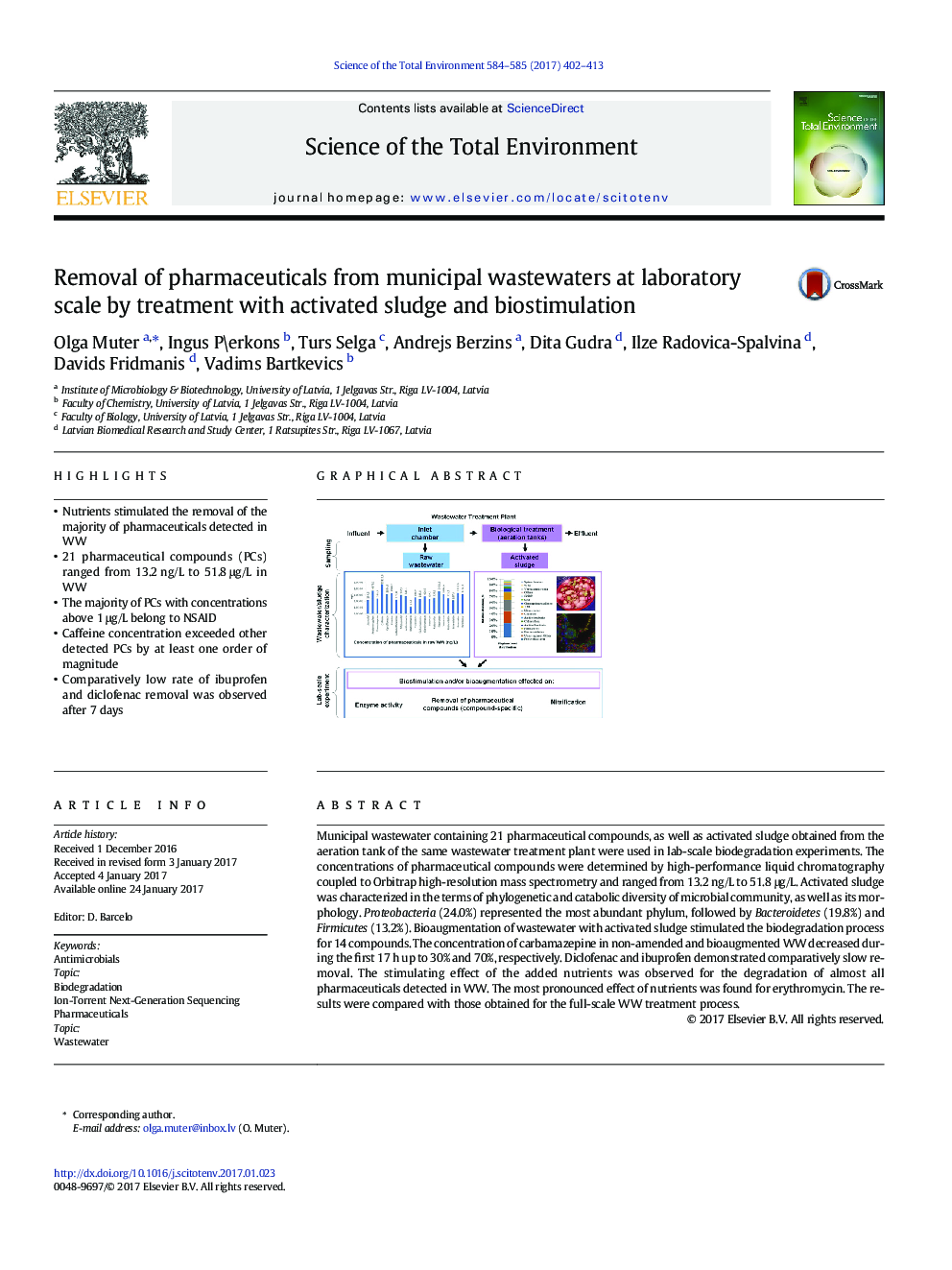| Article ID | Journal | Published Year | Pages | File Type |
|---|---|---|---|---|
| 5751882 | Science of The Total Environment | 2017 | 12 Pages |
â¢Nutrients stimulated the removal of the majority of pharmaceuticals detected in WWâ¢21 pharmaceutical compounds (PCs) ranged from 13.2 ng/L to 51.8 μg/L in WWâ¢The majority of PCs with concentrations above 1 μg/L belong to NSAIDâ¢Caffeine concentration exceeded other detected PCs by at least one order of magnitudeâ¢Comparatively low rate of ibuprofen and diclofenac removal was observed after 7 days
Municipal wastewater containing 21 pharmaceutical compounds, as well as activated sludge obtained from the aeration tank of the same wastewater treatment plant were used in lab-scale biodegradation experiments. The concentrations of pharmaceutical compounds were determined by high-performance liquid chromatography coupled to Orbitrap high-resolution mass spectrometry and ranged from 13.2 ng/L to 51.8 μg/L. Activated sludge was characterized in the terms of phylogenetic and catabolic diversity of microbial community, as well as its morphology. Proteobacteria (24.0%) represented the most abundant phylum, followed by Bacteroidetes (19.8%) and Firmicutes (13.2%). Bioaugmentation of wastewater with activated sludge stimulated the biodegradation process for 14 compounds. The concentration of carbamazepine in non-amended and bioaugmented WW decreased during the first 17 h up to 30% and 70%, respectively. Diclofenac and ibuprofen demonstrated comparatively slow removal. The stimulating effect of the added nutrients was observed for the degradation of almost all pharmaceuticals detected in WW. The most pronounced effect of nutrients was found for erythromycin. The results were compared with those obtained for the full-scale WW treatment process.
Graphical abstractDownload high-res image (238KB)Download full-size image
